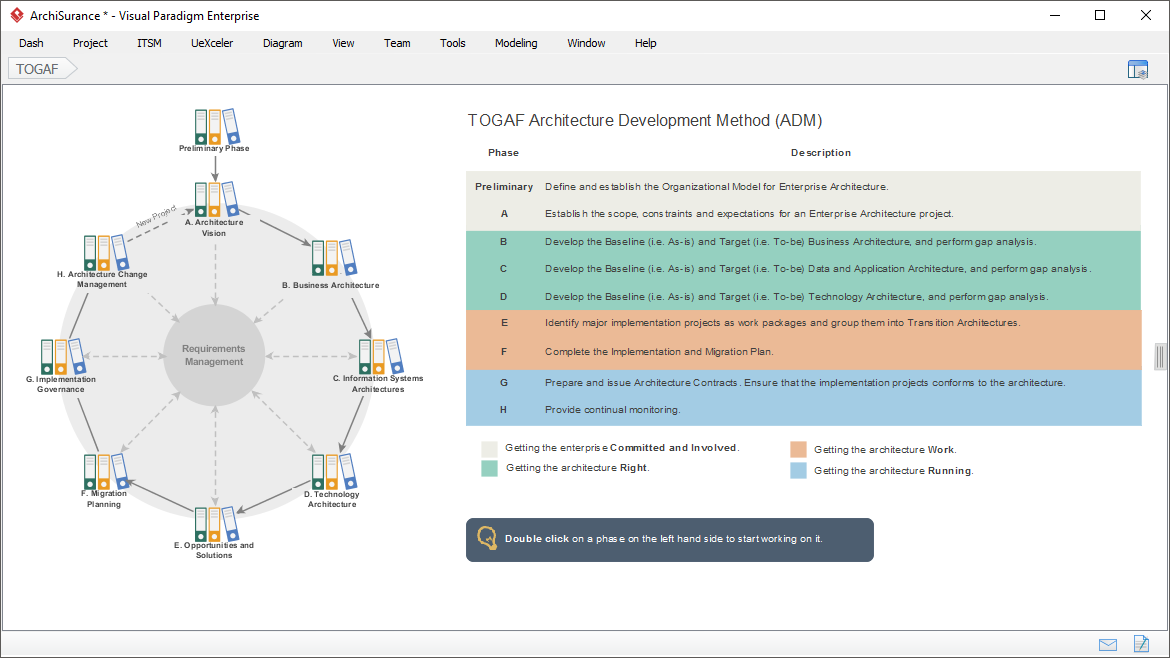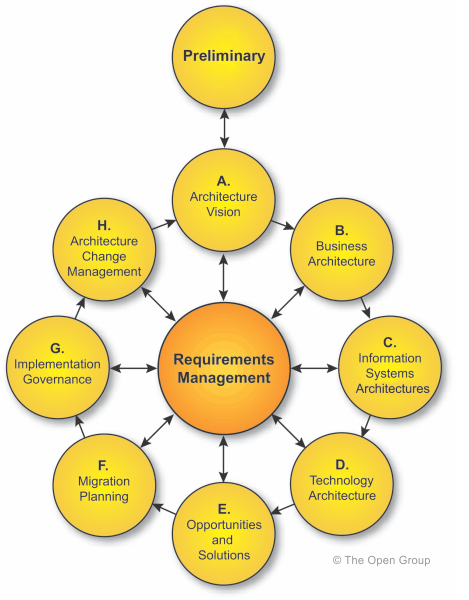The Evolution of TOGAF 10: Empowering Enterprise Architecture in the Age of Agility
Introduction
In the dynamic and ever-evolving world of enterprise architecture, the TOGAF (The Open Group Architecture Framework) standard has long been a guiding light for organizations seeking to streamline their software development and IT governance processes. With the release of TOGAF 10, The Open Group has introduced a transformative update that promises to empower organizations to navigate the complex landscape of enterprise architecture more effectively than ever before.
The Primary Goal of TOGAF: Bridging the Gap
At its core, TOGAF helps organizations implement software technology in a structured and organized way, with a strong emphasis on governance and alignment with business objectives. Software development often requires collaboration across multiple departments and business units, both within and outside of the IT realm. TOGAF serves as a unifying framework, helping to address the challenges of getting key stakeholders on the same page.
By creating a common language that bridges the gaps between IT and the business side, TOGAF brings clarity and fosters greater understanding among all involved parties. This systematic approach to enterprise architecture development helps streamline the process, reducing errors and ensuring a seamless flow as each phase of development changes hands.
Embracing Agility with TOGAF 10
One of the most significant updates in TOGAF 10 is its stronger focus on agile environments. The framework now promises to be more easily applicable for businesses that have embraced agile methodologies, acknowledging the rapidly changing landscape in which enterprises operate.
The modular structure of TOGAF 10 is a game-changer, allowing organizations to start with the core fundamentals and then selectively adopt the extended guidance modules that best suit their needs. This customizable approach empowers businesses to tailor the framework to their specific requirements, ensuring that they can leverage the power of TOGAF without being burdened by components that may not align with their needs.
Streamlined Documentation and Continuous Evolution
The TOGAF 10 update also features streamlined documentation, with the removal of redundant or outdated content. This streamlining not only makes the framework more accessible but also paves the way for easier updates and adaptations in the future.
One of the key promises of TOGAF 10 is its ability to evolve more easily, allowing changes to be implemented as needed without disrupting the established best practices. This agility ensures that the framework can keep pace with the rapidly changing technology landscape and the evolving needs of enterprises.
Aligning IT Goals with Business Objectives
TOGAF’s emphasis on bridging the gap between IT and the business side is particularly crucial in today’s environment, where technology has become deeply intertwined with every aspect of an organization’s operations. By providing a structured approach to enterprise architecture, TOGAF helps align IT goals with the overall business objectives, ensuring that technology investments and initiatives directly support the organization’s strategic priorities.
Streamlining Enterprise Architecture with Visual Paradigm’s TOGAF Guide-Through
In the ever-evolving world of enterprise architecture, navigating the complexities of frameworks like TOGAF (The Open Group Architecture Framework) can be a daunting task. However, with the help of Visual Paradigm’s TOGAF Guide-Through process tool, organizations can leverage the power of TOGAF to transform their IT governance and software development strategies more efficiently than ever before.

Bridging the Gap Between TOGAF and Implementation
TOGAF is renowned for its comprehensive approach to enterprise architecture, providing a structured and disciplined methodology for aligning business objectives with IT initiatives. However, translating the TOGAF framework into practical, day-to-day implementation can be a significant challenge for many organizations.
This is where Visual Paradigm’s TOGAF Guide-Through process tool shines. By seamlessly integrating with the TOGAF standard, this innovative solution guides users through the entire Architecture Development Method (ADM) cycle, ensuring that every step of the process is executed with precision and clarity.
Streamlining the TOGAF Journey
The TOGAF Guide-Through process tool from Visual Paradigm offers a comprehensive suite of features that simplify the adoption and implementation of the TOGAF framework:
- Guided Workflows: The tool provides clear, step-by-step guidance through the TOGAF ADM phases, helping users navigate the framework with confidence and ease.
- Collaborative Modeling: Team members can work together in real-time, ensuring seamless collaboration and alignment throughout the enterprise architecture development process.
- Automated Documentation: The tool automatically generates comprehensive documentation, reducing the time and effort required to create and maintain TOGAF-compliant artifacts.
- Integration with TOGAF ADM: Visual Paradigm’s tool has been updated to fully support the latest version of the ADM framework, keeping organizations at the forefront of enterprise architecture best practices.
Driving Agility and Adaptability
One of the key advantages of Visual Paradigm’s TOGAF Guide-Through process tool is its ability to address the growing demand for agility in enterprise architecture. By streamlining the TOGAF implementation process, the tool empowers organizations to quickly adapt to changing business needs and technological advancements.
This agility is particularly crucial in today’s fast-paced business environment, where the ability to respond to market shifts and customer demands can make the difference between success and stagnation.
Maximizing the Benefits of TOGAF

By leveraging Visual Paradigm’s TOGAF Guide-Through process tool, organizations can unlock the full potential of the TOGAF framework, transforming their enterprise architecture practices and aligning IT initiatives with strategic business objectives.
The tool’s intuitive interface, collaborative features, and automated documentation capabilities help to reduce the complexity of TOGAF implementation, allowing teams to focus on the core goals of the framework: governance, risk management, and the delivery of value-driven technology solutions.
Conclusion
The release of TOGAF 10 represents a significant milestone in the evolution of enterprise architecture frameworks. By embracing agility, streamlining documentation, and promising continuous evolution, The Open Group has positioned TOGAF as a powerful tool that can empower organizations to navigate the complex and dynamic landscape of enterprise architecture with confidence and clarity. As businesses continue to grapple with the challenges of software development and IT governance, TOGAF 10 stands ready to be the guiding light that helps them achieve their strategic objectives and thrive in the digital age.
In the dynamic world of enterprise architecture, the combination of TOGAF and Visual Paradigm’s TOGAF Guide-Through process tool offers a powerful solution for organizations seeking to optimize their IT governance and software development strategies. By bridging the gap between TOGAF’s comprehensive guidance and practical, day-to-day implementation, this innovative tool empowers businesses to navigate the complexities of enterprise architecture with greater agility, efficiency, and success.

